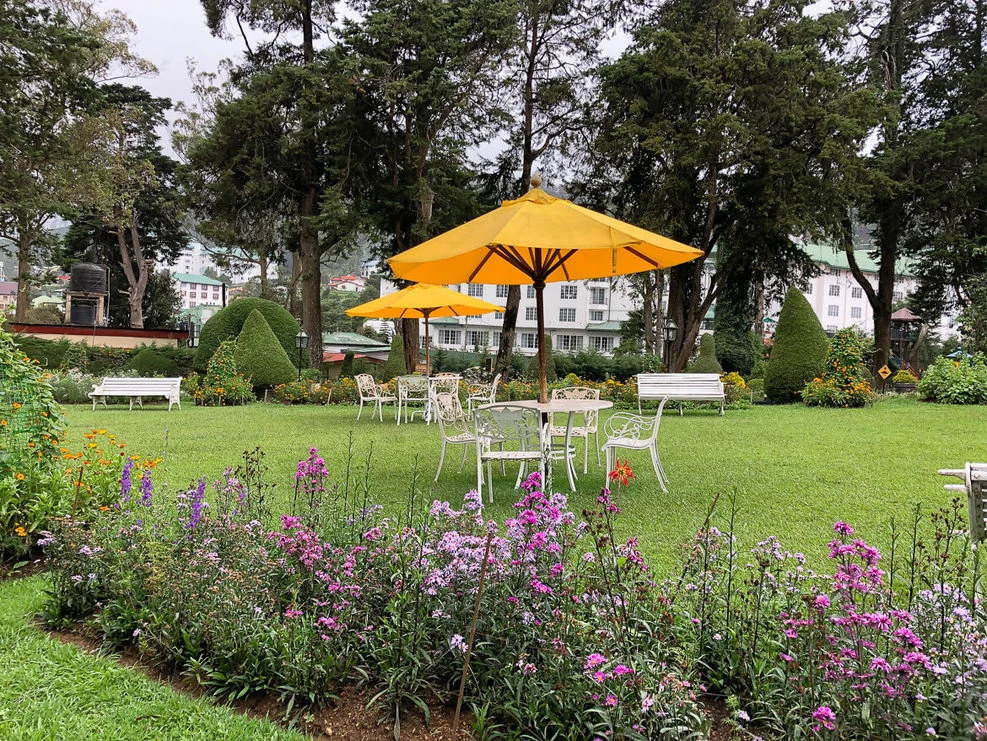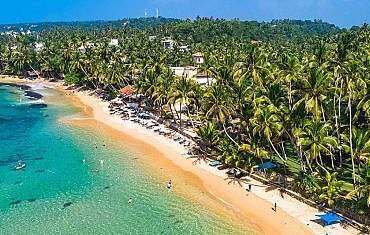The construction of the island’s constantly growing road network has greatly improved Sri Lanka’s infrastructure since colonial times and sped up access to many parts of the country. However, recent railway upgrades have made large intercity expresses swift and comfortable. But getting around in Sri Lanka can still be a very tiresome task in some areas, especially when you stay off the major highways and train lines.

Table of Contents
- How to Get About Sri Lanka: Travel Advice
- Getting around Sri Lanka by Bus
- SLTB mentor
- Special buses
- Expenses, plans, and breaks
- Getting around Sri Lanka by train
- Sri Lanka hill country blue train
- Timetables
- The railway network
- Different classes of railway travel
- Observation cars and tourist carriages
- Charges and bookings
- Getting around Sri Lanka by plane
- Getting around Sri Lanka by a car
- Self drive cars in Sri Lanka
- Hiring a car and driver in sri Lanka
- Morals
- Highways
- Getting around Sri Lanka by a Tuk Tuk
How to Get About Sri Lanka: Travel Advice
It is better to tell the narrative of Navigating Sri Lanka in two sections. The construction of the island’s constantly growing road network has greatly improved Sri Lanka’s infrastructure since colonial times and sped up access to many parts of the country. However, recent railway upgrades have made large intercity expresses swift and comfortable. But travelling in Sri Lanka can still be a very tiresome task in some areas, especially when you stay off the major highways and train lines.
Buses are the most popular (and usually fastest) mode of transportation, reaching even the most remote parts of the island. Trains are a more relaxed way to travel that will eventually take you to other parts of the country. Hiring a car and driver might allow you to visit the island in relative comfort since it can be a very practical and affordable option compared to enduring the unpredictability of public transport. Internal flights offer fast connections between Colombo and other parts of the island if time is of the essence.
Getting around Sri Lanka by Bus
Buses are the main mode of transportation in Sri Lanka. Buses roar past on the island’s main thoroughfares every few seconds, and links to any town, no matter how tiny, are available very regularly. That’s the good news. The bad news is that bus travel in Sri Lanka can be uneasy sometimes due to the careless driving of certain drivers. A typical bus trip in Sri Lanka is a stop-start affair, with stomach-tightening bursts of speed mixed with times of creeping slowness. As the long-suffering bus rounds another bend, every panel rattles to the deafening noises of mechanical protest mingled with loud pop music and parping horns. There is the customary thumping of the brakes, and everyone in their chairs lurches forward. And without a seat, it gets much worse. If you do, you will probably end up serving as an armrest for one of the countless unfortunates shoved into the aisle at the last minute.
Buses come in a variety of forms. The Sri Lanka Transport Board (SLTB), which operates government-run buses, and commercial services are the main differences.
SLTB mentor
The majority of SLTB buses are usually painted red. These are usually slow vehicles on the road, but they can be slightly more comfortable than private buses because the driver won’t be under any pressure to get to the next stop faster than the competition, which can often result in accidents. There won’t be as much pressure on the conductor to get as many people on board.
Special buses
A variety of private bus types exist. Private buses are large and stop everywhere, much like SLTB buses. The only way they differ is that private buses are usually painted white and have stickers on them that identify the firm that owns and operates them. Big buses that some commercial operators refer to as “semi-express,” “express,” or “inter-city” operate somewhat faster services and, presumably, stop less frequently along the route.
Private minibuses are the fastest option when it comes to transportation. Although they are usually described as “luxury” or “express” services, one should proceed cautiously when using these terms. Even though these are smaller cars with air conditioning and tinted, curtained windows, they can nevertheless be more uncomfortable than SLTB services because of the tiny seats and limited luggage room (your bags will likely end up on your lap or between your legs), especially if you’re tall. Express minibuses are intended to make brief stops at significant bus terminals, but in reality, it’s up to the driver and/or conductor where they stop, how long they stay, and how many passengers they’re prepared to jam in. If there is room in the car, you might consider purchasing an additional seat to store your bags on. The conductor may even suggest that you do this.
Expenses, plans, and breaks
Both SLTB and private carriers have extremely low bus fares. On the latter, be aware that you might be required to pay the whole cost for the duration of the bus ride, depending on where you get off. If you want to get off the bus before the journey is through, let the driver or conductor know when you board.
Services on longer and/or less regularly serviced routes are subject to fixed timetables. When travelling on shorter or heavily trafficked routes, services typically end as soon as the bus is fully loaded. Longer routes usually have a greater departure rate in the morning, which declines in the afternoon. Except for Colombo-Jaffna services, seat reservations are almost nonexistent.
Another problem with Sri Lankan buses is that it can be difficult to find the required service. Most buses display the destination in both Sinhala and English, though it helps to know which Sinhala characters you need to look for. Although these places are often unmarked, every bus stop has one or more information booths staffed by people who can provide you with directions and the most recent schedule information. If you’re arriving at a larger terminal via tuktuk, it’s a good idea to ask your driver for help finding the correct bus.
Express services often only make stops at bus terminals or other authorised sites. Other services usually stop where the passenger is and just stand with their arms out by the side of the road when a passenger needs to be picked up. Getting on a bus that you’ve flagged down by the side of the road is the last danger involved with riding it. Drivers often slow down long enough for you to get on instead of stopping completely. When the bus comes, be ready to move swiftly to prevent it from departing again without you, and remain vigilant, especially if you’re carrying a lot of items.
Getting around Sri Lanka by train
A decade of considerable renovations to Sri Lanka’s train network has meant that travelling around Sri Lanka by train is no longer done at a snail’s pace. In the nineteenth century, the British created the train network for the first time. From being a charmingly antiquated, but largely pointless, relic of a bygone era, it has evolved into a pleasant and, on some routes, refreshingly fast means of transit. With the addition of modern rolling stock (smart new AC carriages on intercity routes) and track upgrades around the island, the system has entered the twenty-first century. After being shut down for many years, the routes to Jaffna and Mannar are again operational. An excruciatingly slow pace is maintained by the trains on the breathtaking Sri Lanka hill-country travel route.
Sri Lanka hill country blue train
The Sri Lanka hill country train is the most popular train journey in Sri Lanka, as it allows travellers to experience one of the most scenic places in Sri Lanka. The hill country train journey is considered to be one of the most scenic train trips in the world. The demand for hill country train trips is very high, so the railway department of Sri Lanka has launched a special, luxury train for travellers named “Ella Odyssey.” A hill country train trip can be done from Kandy to Nuwara Eliya and extended up to the popular hill country resort of Ella. Sri Lanka Hill Country train trip is packed into many multi-day Sri Lanka tour packages, such as the Kandy-Nuwara Eliya 2-day tour that is organised by Seerendipity tours.
Timetables
On certain routes, there are significant differences in travel durations between express services that make few stops and slow services (such as night mail trains), which stop at nearly every station along the way. Conversely, standard intercity services make a greater number of stops.
The latest train timetables can be accessed at railway.gov.lk and slr.malindaprasad.com. Visit the excellent seat61.com to get more in-depth analyses on the latest developments in Sri Lankan trains.
The railway network
The network is divided into three main lines: the coast line, which starts in Puttalam in the north and goes south along the west coast of Sri Lanka to Weligama and Matara (completed as of 2023, extending as far as Kataragama) via Negombo, Colombo, Kalutara, Bentota, Beruwala, Aluthgama, Ambalangoda, Hikkaduwa, and Galle. The hill country line runs from Colombo to Kandy, then to Hatton (for Adam’s Peak), Nanu Oya (for Nuwara Eliya), Haputale, Bandarawela, Ella, and Badulla. Starting in Colombo, the northern line passes through Kurunegala, Anuradhapura, and Vavuniya and ends in Jaffna. There are three further branches from this line that lead to Madhu Road: Mannar, Talaimannar, Trincomalee, Polonnaruwa, and Batticaloa.
Different classes of railway travel
On trains, there are three classes. Only second- and third-class carriages are available on most routes. Actually, there’s not much of a difference between the two: second-class seats have slightly more padding and fans in the carriage, and on some trains, seats in both classes can be reserved. The primary benefit of booking ahead is that standing is not allowed on reserved trains, which helps prevent them from filling up. Second-class unreserved carriages have a little premium, but the main advantage is that they are usually less crowded.
There are several seating arrangements available in first class, but they are only available on specific trains and must always be reserved in advance. On intercity trains, hill country trains, and northern routes, first-class seats are offered in air-conditioned cars (although you are essentially sealed off from the outside world and cannot open the windows). First class also includes the observation car on hill country trains and (very grotty) sleeping berths on overnight runs.
The island is small, so there aren’t many overnight trains. These include normal seats, first-class sleeping berths, and second- and third-class “sleeperettes,” which are basically just reclining seats.
Observation cars and tourist carriages
Intercity services occasionally include a special carriage called the “observation car” over the steep route that links Colombo with Kandy and Badulla. Usually found in the back of the train, it has very worn armchair-style chairs and huge panoramic windows that offer a 360-degree view. Every seat is reserved, and they go quickly, especially on the popular route from Colombo to Kandy.
Charges and bookings
Recently, train fares have increased a lot across all train routes in Sri Lanka. It was a considerable increase in rate, on par with the hike in fuel prices. However, even with the most recent price increases, the fares are still affordable compared to other transport modes, such as taxis.
It is now possible to reserve all three classes of seats in advance for trains. Up to fourteen days before travel, in-person reservations are accepted at major stations. You can also make bookings over the phone if you have an Etisalat or Mobitel account. While Sri Lankan Railways does not offer an internet booking facility, a number of independent companies do. Travel companies such as Seerendipity Tours provide opportunities to book train seats through their head office.
The bad news is that reservations for many services tend to sell out as soon as they go on sale, especially for first class when they are available. Sometimes even the lower classes are completely reserved. Therefore, it is definitely worthwhile to use the services of a travel agent to book more than two weeks in advance. It’s great news (kind of) that there are some second- and third-class unreserved coaches on almost every train. The number of tickets that may be bought for them is unlimited, and they can only be bought on the day of departure—sometimes not even an hour in advance. This implies that getting a ticket is inevitable. When a train is declared to have “sold out,” it means that all of the reserved seats have been filled. It also means, of course, that carriages can get crowded from time to time.
Getting around Sri Lanka by plane
In addition to providing a quick alternative to drawn-out road or train travel, domestic aviation services are an unforgettable experience in and of themselves. They frequently provide stunning aerial views of the island as well. Domestic air transport is maintained by private companies, which have regularly scheduled flights to and from Katunayake International Airport, Koggala, Dickwella, Weerawila (near Tissamaharama), Kandy, Castlereagh (near Adam’s Peak), Sigiriya, Batticaloa, and Trincomalee. Water’s Edge is located on the southern tip of Colombo. The rates aren’t extremely cheap, but the flights are really scenic. The fact that many routes include landing or taking off from the water adds even more excitement.
Getting around Sri Lanka by a car
Although most of Sri Lanka’s roads are in good condition, driving can be challenging in many areas due to a variety of hazards, such as chaotic cyclists, crazy bus drivers, suicidal dogs, and large groups of pedestrians. On the island, driving requires three things: “good horn, good brakes, and good luck.” Furthermore, Sri Lankan motorists follow an extremely strange set of traffic regulations.
If you plan a road trip in Sri Lanka it is recomended to have a vehcile with a well-trained tourist driver. It is comfortable and safe to travel with a local driver. On the downside it could be a bit expensive compared to other popular public transport modes. Most tour operators such as Seerendipity tours maintain a fleet of luxury vehicles. They arrange all types Sri Lanka holiday packages using their comforatble vehicles.
Self drive cars in Sri Lanka
If you intend to drive yourself, you will require an international driver’s licence. You will also want a second permission in order to drive in Sri Lanka, which you may get in Colombo from the Automobile Association of Ceylon (office hours: 8 a.m. to 4 p.m., Monday and Friday). Permits are granted instantly and have a one-year maximum validity.
Equipping oneself with a trustworthy map or atlas—or a similar gadget—like a tablet or smartphone, is also a great option. Regarding traffic laws, bear in mind that in Sri Lanka, if a bus or other larger vehicle is travelling faster than you, the driver of that vehicle will usually expect you to move out of the way. In addition, many vehicles speed through dangerous places like blind corners without stopping. You should be ready to deal with other vehicles that frequently drive erratically and quickly.
Hiring a car and driver in sri Lanka
Due to the difficulties of using public transit, a lot of travellers to Sri Lanka opt to hire a car and driver, which can be less expensive than you might imagine and offers unlimited flexibility. While some drivers only serve as your driver, others are trained “chauffeur-guides” with government certification and a tourist board licence who can also serve as guides at all the main tourist destinations and address any inquiries you may have about the country.
If you want to be sure you have a good driver, it pays to engage a reputable company (such as Seerendipity Tours or Sirilak Tours) that only employs chauffeur-guides who have been accredited by the Sri Lanka Tourist Board. Verify that your driver speaks at least a little English, and be explicit about the places you wish to go and the ones you don’t. Some drivers press their good nature on their customers, even going so far as to invite them to dine with them and insist on acting as tour guides and interpreters. Great if this is what you want, but if not, don’t be afraid to voice your privacy expectations when you’re not in the car.
Morals
A high-end air-conditioned car will set you back more money than a non-air-conditioned minivan; quality has a greater impact on pricing than vehicle capacity. Rates for the smallest cars start at approximately $50 per day, which also covers living costs and driver’s fees. Most luxury hotels provide meals and accommodations for drivers for free or at a nominal fee. If you are staying at a cheap or moderate hotel, you will be paying for your driver’s accommodation and food. As always, to avoid misunderstanding and arguments later, it’s advisable to attempt and arrange a daily allocation for this before you go for your Sri Lanka trip. It’s likely that your driver will also demand a tip, which, depending on how good they are, can be anywhere from $5 to $10 every day.
You should also include in the cost of petrol, which is likely to be rather high given its present price in Sri Lanka and might significantly raise the whole amount. Moreover, a few companies offer a paltry 100 km of free mileage per day, which is not enough for the island’s twisting roadways. You could therefore have to pay more for extra mileage. Or you may just drive about the island for the day with a vehicle rental. Not only can renting a car save you money on petrol and accommodation, but it also eliminates the need to pay for your driver’s meals.
Highways
Late 2011 saw the much-needed improvement of Sri Lanka’s nineteenth-century highway infrastructure with the completion of the country’s first true motorway, the E01 Southern Motorway, which spans from Colombo to Galle (and was later expanded from Matara to Hambantota in 2014). 2013 saw the construction of the E03 Colombo–Katunayake motorway, the country’s second motorway, which linked the capital city with the international airport. The E02 Outer Circular Motorway, which connects directly to the E01 but not the E03, was constructed as a third motorway in 2014. In addition, it serves as a ring-road around Colombo and is currently being extended. 2020 will see the opening of the E04 Central Motorway, which will link Colombo to Kandy, in addition to the E06 Ruwanpura Motorway, which will connect Colombo to Ratnapura and Pelmadulla.
The 350-kilometer network will alter how people travel throughout the island once it is finished. The motorway to Southern Sri Lanka has made the entire southwest and south coast more accessible than before; it has already reduced the hard three-hour travel from Colombo to Galle to a pleasant hour’s drive. Likewise, the Central Motorway to Kandy is expected to slash current travel times by about two thirds and significantly reduce travel times to additional hill country locations in the future.
Getting around Sri Lanka by a Tuk Tuk
The rows of motorised rickshaws that pass through every town, city, and village in Sri Lanka are the most identifiable sight. In short distances, mainly between towns, tuktuks—also called three-wheelers, trishaws, or, in a more positive sense, ‘taxis’—are the go-to form of transportation in Sri Lanka. They are useful for long distance travel in an emergency or for excursions, though, if you get lost or don’t want to wait for a bus. Hire a Bajaj rickshaws, which make up the majority of the vehicles. Bright stickers, miniatures, plastic flowers, and other whimsical or talismanic items are commonly used by their drivers to decorate them.
You never have to walk very far in Sri Lanka before encountering someone attempting to court you for business. Because they can move through traffic at regularly extremely rapid speeds, rickshaws are very practical and can even be entertaining—in a little disturbing way—if you do need a ride. Because there are so many drivers in the neighbourhood, you also always have the upper hand when bartering. If you are unable to reach a mutually agreeable price, there will always be another party ready to take your business.
Except in Colombo, most places in Sri Lanka rickshaws are not metered; you can bargain with the driver to receive the fare you wish. Never depart without deciding on the fare first. While there are a minority of dishonest tuktuk drivers in Sri Lanka who will take you for anything, most of them are reliable and you can negotiate a reasonable fare without even having to ask. With the wide range of probity you’ll encounter, it’s often difficult to pinpoint exactly where you stand. The basic fare for metered taxis in Colombo is currently between Rs. 100 and Rs. 120 per kilometre. Although this is a decent general rule, you will definitely wind up paying more unless you are an experienced negotiator, especially in large towns and popular tourist locations. Keep in mind that the rate per kilometre should drop as the distance travelled increases. In addition, the abundance of rickshaws in tourist places usually gives you the advantage when negotiating; if you can’t agree on a reasonable fare, there will always be another driver willing to accept your business.
Finally, be cautious when rickshaw drivers say they don’t have any change. When a driver says they only have Rs. 50 or Rs. 60 change, they can be telling the truth and hoping you’ll accept a few rupees less. This might even happen when you try to pay for a transport for Rs. 120 with a Rs. 150 note. If you don’t have change, make sure the driver has it before you leave. If you are honest about the issue instead of risking losing your fare, you may be confident that your driver will make the extra effort to get you change.




